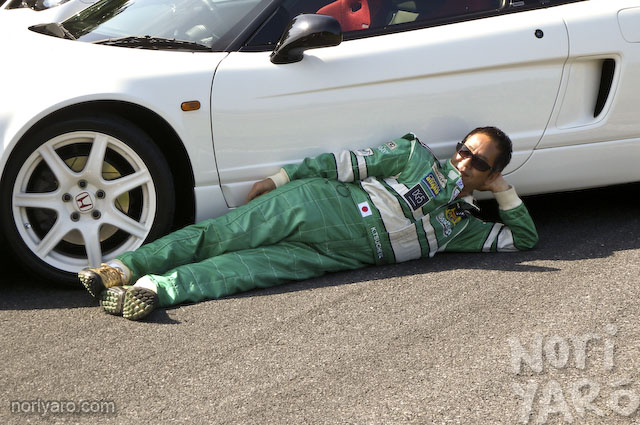I kind of baseline tuned my suspension at the street just by driving around. drive some bumpy roads vs highway, n make some turns.. you should be able to tell if you are comfortable with the compression (generally harsher as you stiffening up) but rebound will take a little bit more patience.
other than that, Koni website has a good read and I found it very useful.
copy and paste from there:
Suggested Adjustment Procedure for Road Course Use
Adjusting the Compression (Bump) Damping Control
Bump damping controls the unsprung weight of the vehicle (wheels, axles, etc.). It controls the upward movement of the suspension such as hitting a bump in the track. It should not be used to control the downward movement of the vehicle when it encounters dips. Also, it should not be used to control roll or bottoming.
Depending on the vehicle, the ideal bump setting can occur at any point within the adjustment range. This setting will be reached when "side-hop" or "walking" in a bumpy turn is minimal and the ride is not uncomfortably harsh. At any point other than this ideal setting, the "side-hopping" condition will be more pronounced and the ride may be too harsh.
1. Set all four dampers on minimum bump and minimum rebound settings.
2. Drive one or two laps to get the feel of the car.
NOTE: When driving the car during the bump adjustment phase, disregard body lean or roll and concentrate solely on how the car feels over bumps. Also, try to notice if the car "walks" or "side-hops" on a rough turn.
3. Increase bump adjustment clockwise 3 clicks on all four dampers. Drive the car one or two laps. Repeat this step until a point is reached where the car starts to feel hard over bumpy surfaces.
4. Back off the bump adjustment two clicks. The bump control is now set.
NOTE: The back off point will likely be reached sooner on one end of the vehicle than the other. If this occurs, keep increasing the bump on the soft end until it too feels too hard. Then back that side off two clicks. The bump control is now set.
Adjusting the Rebound Damping Control
Once you have found what you feel to be the best bump setting on all four wheels, you are now ready to proceed with adjusting the rebound damping. The rebound damping controls the transitional roll (lean) as when entering a turn. It does not limit the total amount of roll; it does limit how fast this total roll angle is achieved. How much the vehicle actually leans is determined by other things such as spring rate, sway bars, roll center heights, etc.
It should be noted that too much rebound damping on either end of the vehicle will cause an initial loss of lateral acceleration (cornering power) at that end which will cause the vehicle to oversteer or understeer excessively when entering a turn. Too much rebound control in relation to spring rate will cause a condition known as "jacking down." This is a condition where, after hitting a bump and compressing the spring, the damper does not allow the spring to return to a neutral position before the next bump is encountered. This repeats with each subsequent bump until the car is actually lowered onto the bump stops. Contact with the bump stops causes a drastic increase in roll stiffness. If this condition occurs on the front, the car will understeer; if it occurs on the rear, the car will oversteer.
1. With the rebound set on full soft and the bump control set from your testing, drive the car one or two laps, paying attention to how the car rolls when entering a turn.
2. Increase rebound damping three sweeps or 3/4 of a turn on all four dampers and drive the car one or two laps. Repeat this step until the car enters the turns smoothly (no drastic attitude changes) and without leaning excessively. Any increase in the rebound stiffness beyond this point is unnecessary and may in fact be detrimental.
EXCEPTION: It may be desirable to have a car that assumes an oversteering or understeering attitude when entering a turn. This preference, of course, will vary from one driver to another depending on the individual driving style.














